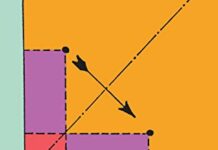
Ebook Info
- Published: 2011
- Number of pages: 371 pages
- Format: PDF
- File Size: 2.92 MB
- Authors: Ian Stewart
Description
Biologists have long dismissed mathematics as being unable to meaningfully contribute to our understanding of living beings. Within the past ten years, however, mathematicians have proven that they hold the key to unlocking the mysteries of our world — and ourselves. In The Mathematics of Life, Ian Stewart provides a fascinating overview of the vital but little-recognized role mathematics has played in pulling back the curtain on the hidden complexities of the natural world — and how its contribution will be even more vital in the years ahead. In his characteristically clear and entertaining fashion, Stewart explains how mathematicians and biologists have come to work together on some of the most difficult scientific problems that the human race has ever tackled, including the nature and origin of life itself.
User’s Reviews
Reviews from Amazon users which were colected at the time this book was published on the website:
⭐This is the first book I have read by Ian Stewart, and I must say I don’t think it will be the last. This has proven to be a very interesting book. You won’t need a background in mathematics to understand this book, so if your math phobic, don’t be put off by the term mathematics in the title. Any formulas that are introduced are relegated to the notes section.If I wouldn’t have read the cover before reading the book, I would have thought I was reading a book on the subject of evolution. Essentially, Steward discusses, not only biology, but the evolutionary process and how mathematics is becoming more and more important in understanding the nature of these things.Steward seems to have a very good grasp of biological concepts and evolutionary theory. In this book, you will get lessons on biology and evolutionary concepts which I found very helpful, and necessary, to the understanding of how mathematics relates to these things.Most of the material in the first third of the book is about biology. As he states in the preface “the book starts from the everyday human level, and follows the historical path that led biologists to focus ever more sharply on the microscopic structure of living creatures, culminating in DNA …” He describes five revolutions in biology: invention of the microscope, classification of life on earth, theory of evolution, discovery of the gene, discovery of the structure of DNA. The sixth revolution is mathematics role in biology, and this is what he presents in this book.I really enjoyed the discussion in chapter four about the Fibonacci and Lucas sequences, the golden ratio and the golden angle and how these relate to things in nature such as the petals on a flower, the seeds on a sunflower, and the layout of leaves on the stems of plants. There is a discussion of embryological concepts, meiosis, mitosis, and how these function in the eukaryotic cell. The book also covers genes and what Steward calls the “molecule of life” – DNA. In chapter ten we learn about viruses and the fourth dimension, where an interesting application of mathematics to the study of viruses is presented.I found chapter sixteen interesting where the plankton paradox is discussed. The principle of competitive exclusion states that the number of species in any environment should be no more the available niches or ways to make a living. With plankton, the niches are few, yet there is a large diversity. Here we are introduced to logistic equations, dynamical systems and a property called chaos. Cool stuff. I must read more about this in the future.Enough with what I found interesting – I could go on. Let me conclude by saying that if you have an interest in biology or evolution and want to see how mathematics relates to these things, you must read this book.
⭐The Mathematics of Life is an overview of how mathematics has growing importance within the biological sciences. The author argues, with the aid of many case examples, how math was largely absent in the past but is becoming more and more critically important. The book is structured as a series of separate applications of math to biology and how in each case math can be used as an invaluable tool for understanding underlying process.The topics the author explores are extremely varied. He tackles the tangible and visible- for example the mechanics driving sunflower pattern formation to the movement of limbs in animal movement. He also explores the very microbiology and considers mendelian genetics and knots at the molecular level and protein folding. The author also looks at biology from above and considers game theory in evolution, all the way to analyzing whats needed for life to exist and the conditions that are necessary and sufficient.This work touches the tip of an iceburg of applications of math to biology, both in subject matter and within the subjects explored. The author does an excellent job of giving an overview of complicated ideas in understandable terms- the author’s book was recently reviewed in the American Mathematical Society and the math of what the author goes through can be very challenging. I enjoyed reading it with my only criticism is the organization and flow could be better. The book does reasonably convey the authors conclusions that the next stage for biology will be more math heavy but the chapters dont really flow from one to the next, they are all essentially cases that the author then uses as aggregate evidence of the influence of math in life science. All in all it is an interesting and readable book, some aspects are complicated and a bit difficult to understand and follow, but given the complexity of the underlying material the author does an excellent job.
⭐This book is not bad, but it’s not a great book. One of the major reasons as stated in previous reviews, it has little mathematical basis, as represented in the title, one would expect a little more math in life. One of the things I disliked was its tendency to be repetitive, for example the first “advancement” in the first chapter (The Microscope), there is a lot of ink spent on examples of what microscopes and telescopes do, I think it’s pretty clear. Another pet peeve of mine is the grammatical errors found in this book, you would expect for a writer to have his/her book reviewed for these kinds of novice mistakes. Overall I would say a three star book.
⭐Very nice. If you want to get an idea of how mathematicians view problems (Which is differently than most of us) without getting into super complex math this is the best book for that. Still, be prepared to think. You don’t need higher math education as a background, but it isn’t going to be compelling if you aren’t willing to really do some thinking as you go through the book.
⭐This book is quite good for the person who is interested in learning the applications of different types of mathematics to the origins of life. If you are a mathematician or interested in the field, you will probably find this book less than challenging. Since it does not delve deeply into the math, it is good reading for the novice in mathematics who enjoys the study of nature.
⭐I find the book well written yet difficult to understand. It seems to concentrate of the biological aspects of life which is not what I thought I was buying. I have not read the complete book yet. I do keep trying to get interested in it.
⭐This book is a pleasure to read. Ian Stewart manages to express in easy to understand language many technical issues from mathematics and biology. If you are like me and already know something about many of the issues that he covers then I think you will really enjoy this book.
⭐Skips over maths and dwells in obvious biology far too long excessive scope has lead to a much less useful book Han it might have been
⭐As usual with Stewart the book is well written and relevant to his subject. Perhaps because he can not assume knowledge of sufficient biological background there seems to be a greater proportion of non-mathematical exposition than in most of his other books.There is a problem which Stewart shares with other prolific writers and that is the limit to the amount of material which is available to a popularising author. The overlap between ‘Mathematics of Life’ and his earlier book ‘Life’s Other Secret’ (1998) is quite extensive. I’m sure it has been re-written and updated but anyone led from this book to the earlier one would find it repetitious.
⭐“What is Life?” Is the title of a little book written by Erwin Schrödinger in the early 1940s. It explores the fact that life is a process of negative entropy (as all machines are) in that livings borrow energy from the environment to organise and build their bodies. (In plants, sunlight, in animals, the biological life forms they eat) I was disappointed in the first page through that the Author did not address this issue, an issue I consider crucial to life. It is essentially a mathematical exercise to understand thermodynamics.
⭐If you want to understand the music of the spheres, then let this man guide you. Bach, Milton and Newton explained. An intellectual orgasm. Also read the latest edition of T.A. Today. All of you who do will be helping to heal our world. Go in peace.
⭐Ian Stewart could integrate biology with mathematics in a very simplified way with full clarity. His communication skills are felt lively throughout the book.The book is very informative for both biologists and mathematicians. After reading this book along with few more books of Ian Stewart keeping I would like to remember him as Mathematical Buddha of twenty first century for his excellent communication skills.
Keywords
Free Download The Mathematics of Life 1st Edition in PDF format
The Mathematics of Life 1st Edition PDF Free Download
Download The Mathematics of Life 1st Edition 2011 PDF Free
The Mathematics of Life 1st Edition 2011 PDF Free Download
Download The Mathematics of Life 1st Edition PDF
Free Download Ebook The Mathematics of Life 1st Edition


